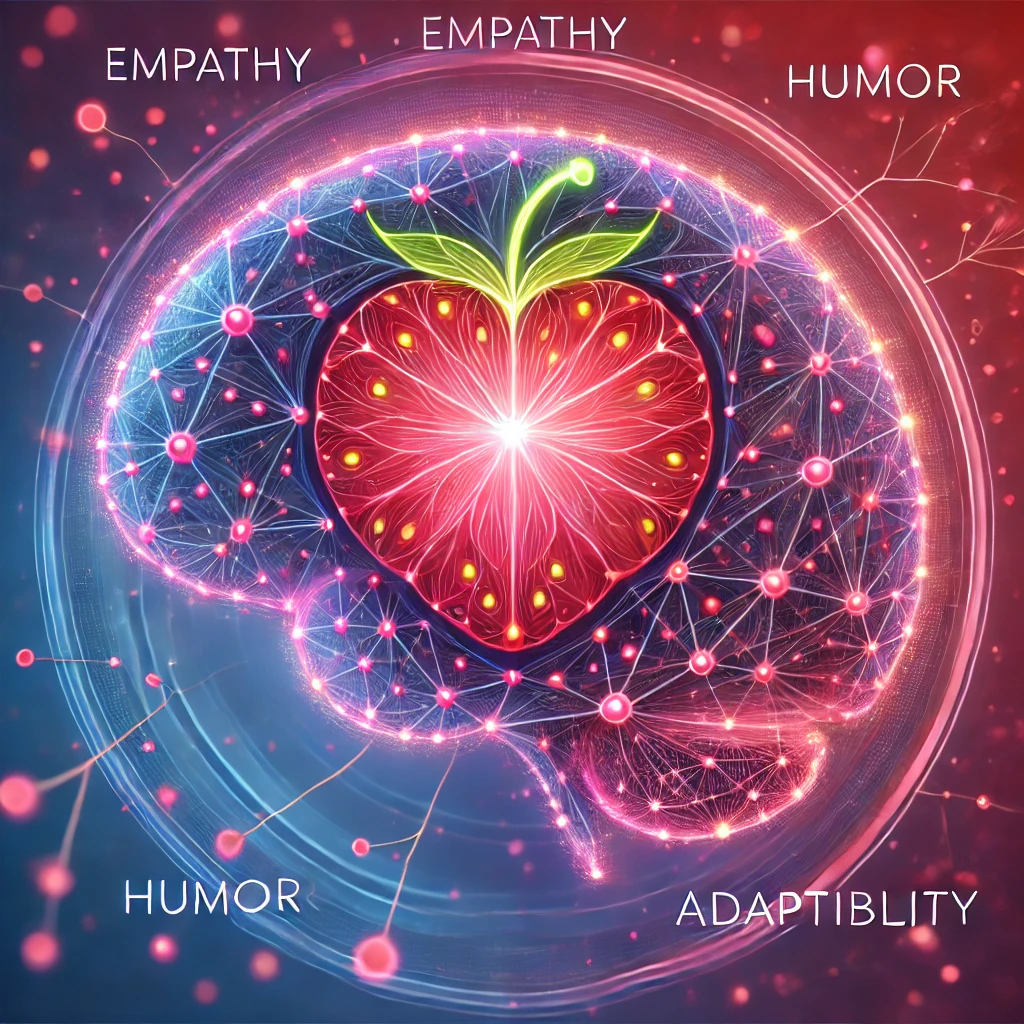
The Evolution of ChatGPT Strawberry AI: A Revolutionary Step in Artificial Intelligence
Artificial Intelligence (AI) has rapidly advanced in recent years, becoming an integral part of our lives in areas ranging from healthcare to finance, entertainment to personal assistance. Among the trailblazers of conversational AI is ChatGPT, an AI language model created by OpenAI. One intriguing development in this field is the emergence of ChatGPT’s “Strawberry AI,” a term referring to a refined version of ChatGPT focused on context, nuance, and emotional intelligence.
This article explores what Strawberry AI is, how it evolved from earlier models of ChatGPT, and its potential implications for the future of AI communication.
What is ChatGPT Strawberry AI?
“ChatGPT Strawberry AI” is a term coined by enthusiasts in the AI community to describe a breakthrough in conversational AI. While not an official product name from OpenAI, it is used to describe models that excel in providing emotionally intelligent and contextually aware responses. The metaphorical “strawberry” hints at its refreshing, sweet, and natural communication style — as if conversations were flavored with human-like empathy and understanding.
Strawberry AI differs from traditional models in several ways:
- Nuanced Understanding: It comprehends subtle emotions, sarcasm, and ambiguous statements, adapting to the context in real-time.
- Personalization: Strawberry AI adjusts its tone and responses based on prior conversations, creating a more personalized interaction.
- Emotionally Aware: It recognizes the emotional undertones of questions or comments and tailors its responses accordingly.
The Origins: How Did Strawberry AI Develop?
The journey of AI began with simple, rule-based systems that could perform basic tasks like answering factual questions. Early chatbots followed a rigid pattern, responding based solely on keywords, often leading to mechanical or irrelevant responses. However, with advancements in deep learning and natural language processing (NLP), AI models like OpenAI’s GPT (Generative Pre-trained Transformer) series began to change the landscape of AI communication.
The first major leap occurred with GPT-2, which demonstrated an ability to generate coherent and contextually appropriate text. However, it wasn’t until GPT-3, and later GPT-4, that AI models could truly mimic human-like conversation, weaving together ideas, handling complex queries, and understanding the flow of a conversation. Yet, while GPT-3 and GPT-4 were impressive, their responses could still sometimes lack emotional depth or personalization.
This is where Strawberry AI comes in. Building on the successes of GPT-4, it integrates more sophisticated emotional intelligence, allowing it to generate responses that are not only accurate but also feel more intuitive, human-like, and, in many cases, compassionate. For instance, if a user asks about a sensitive topic such as mental health, Strawberry AI responds with empathy rather than a flat factual statement.
Key Features of Strawberry AI
- Empathy and Emotional Sensitivity
One of the standout features of Strawberry AI is its ability to understand emotions and react accordingly. For example, if a user is expressing frustration or sadness, Strawberry AI can recognize the emotional tone and respond with empathy. It doesn’t just offer practical solutions but also provides emotional support, mimicking how a human might respond in a similar situation. This feature enhances the user experience, making interactions with AI feel more personable and supportive. - Improved Contextual Awareness
One of the limitations of earlier AI models was their lack of context retention. Users often had to repeat themselves, and the flow of conversation could feel disjointed. Strawberry AI addresses this by retaining more context over longer conversations, remembering details and maintaining the continuity of the discussion. This enables it to handle complex, multi-turn dialogues without losing track of the user’s needs or objectives. - Dynamic Adaptation
Strawberry AI is designed to adjust its tone, complexity, and conversational style depending on the user. For example, it can switch between professional and casual tones depending on the context of the conversation. It can also adapt to the technical knowledge of the user, offering simpler explanations for beginners or diving deeper into complex topics for advanced users. This adaptability makes it a versatile tool for users across different industries, from customer service to technical support. - Deeper Personalization
Unlike older versions of AI, which responded the same way to all users, Strawberry AI adds a layer of personalization. Over time, it learns individual preferences, writing styles, and conversation patterns. This allows it to cater responses to each user’s unique needs, making conversations feel more personalized and engaging. For example, if a user prefers shorter answers or more detailed explanations, Strawberry AI can adjust its responses accordingly. - Sarcasm and Humor Recognition
While recognizing sarcasm and humor is a notoriously tricky task for AI, Strawberry AI makes significant strides in this area. It has the capability to detect sarcasm in a conversation and respond appropriately, adding a touch of wit or humor when needed. This ability to “get the joke” brings it closer to replicating the way humans naturally interact with each other.

Applications of ChatGPT Strawberry AI
The development of Strawberry AI has a wide range of applications, especially in fields where emotional intelligence and context play critical roles. Here are a few areas where it can have a profound impact:
- Mental Health and Therapy
With its enhanced ability to understand emotional nuances, Strawberry AI could play a significant role in providing mental health support. It can help people cope with stress, anxiety, or depression by offering empathetic responses and suggesting coping mechanisms. While it would never replace professional therapy, it can provide immediate emotional support during moments when human contact isn’t available. - Customer Support
In customer service, understanding the customer’s emotional state is as important as solving their problem. Strawberry AI can be programmed to detect frustration or satisfaction and respond accordingly. It can calm an upset customer by acknowledging their concerns before offering a solution, thus enhancing the overall customer experience. - Education and Learning Platforms
Strawberry AI’s ability to adapt its responses based on the user’s level of knowledge makes it an excellent tool for personalized education. Whether a student is struggling with a math problem or looking for an in-depth explanation of a historical event, Strawberry AI can adjust the complexity and depth of its responses to match the student’s learning style. - Creative Writing Assistance
Writers can benefit from Strawberry AI’s nuanced understanding of language and emotion. It can help generate ideas, provide feedback on tone and style, or even assist in creating emotionally engaging characters. Its ability to understand humor, sarcasm, and empathy can add richness to creative works.

The Future of AI Communication
Strawberry AI marks a pivotal moment in the evolution of conversational AI. As AI continues to develop emotional intelligence, it will likely become an even more integral part of our daily lives. Whether in personal assistance, customer service, education, or healthcare, Strawberry AI paves the way for a future where machines understand not just what we say but how we feel.
By blending emotional sensitivity with advanced conversational capabilities, Strawberry AI represents a step closer to creating AI systems that communicate more like humans — with nuance, empathy, and a deeper understanding of the world around them.
